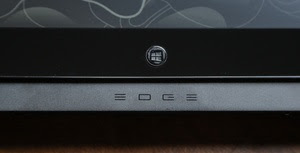Eternal or even elongated life is an idiotic thing to wish for. You don't want to get old, and then tack on 50 more years of wrinkles and Metamucil. But prolonged youth? Full body youth? More time being young and nubile and beautiful? Absolutely. And the key to that could lie right inside your brain.
Scientists have for the first time found a region of the brain—a signaling pathway in the hypothalamus—that can slow down or speed up the aging process in mice. Their lives and youthful vigor were extended by about 20 percent by a combination of blocking a protein complex with a distressingly long name (nuclear factor kappa-light-chain-enhancer of activated B cells, or "evil magic") and injecting the brain with a hormone ("good magic", or gonadotropin-releasing hormone [GnRH]) that is blocked by that protein.
The long and short? Poke the brain, stay young like Aragorn or Halle Berry.
The hypothalamus controls functions like growth, reproduction, and metabolism, so it's not an outlandish leap to think it could also regulate aging. It's not confirmed that this function carries over to humans, but if it does, the results count be groundbreaking. Injecting GnRH, for example, not only slowed physical aging, but cognitive decline as well, by encouraging neuron regeneration. This would be great for degenerative conditions like Alzheimers and dementia, or possibly for brain injuries suffered in sports.
It's still not known exactly how aging works, scientifically. Whether it's a bunch of individual changes throughout your body, or if there's one main trigger point telling the rest of your body to get old, according to Livescience. So this could be just one piece of a much larger cosmos of anti-aging science. To that end, researchers at Johns Hopkins have been working on a Benjamin Button But Not Crap solution that could revert cells all the way back to the state they were in the day you were born. But given these results, there should be plenty more research down this path.
Naturally, there are a lot more factors to keeping humans young and fabulous than you see in mice. Wrinkles and gross old people skin, for instance. Collagen and elastin in the skin break down over time, and it's possible that wouldn't be related to the brain. Similarly, the liver spots prominent on the elderly are simply caused by a buildup of melanin over time.
More here.

















































